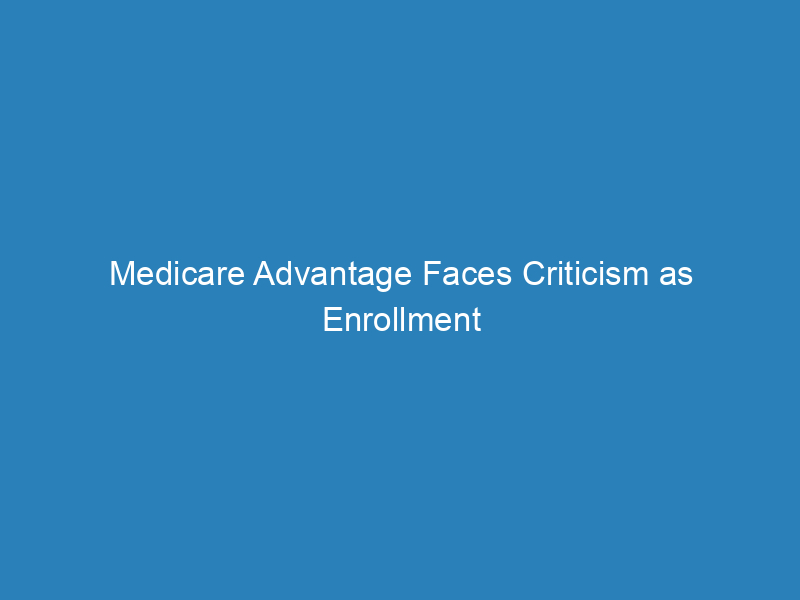
Medicare Advantage Faces Criticism as Enrollment Surges Amid Investor Concerns
In 2023, a significant milestone was reached in the realm of healthcare: for the first time, enrollment in Medicare Advantage (MA) plans, which are managed by private insurance companies, exceeded 50% of eligible beneficiaries. At first glance, this achievement, coupled with a surge of advertisements during the fall enrollment period, might suggest that MA was thriving. However, the reality paints a much different picture.
Investors were jolted in late January as earnings reports revealed that profits for MA insurers had plummeted. Stocks for major companies like CVS Health and UnitedHealth Group dropped by 5.2% and 6.2%, respectively, while Humana’s shares suffered a staggering 14.2% decline. Insurers attributed these losses to higher-than-expected healthcare utilization rates, warning that 2024 may bring similar challenges. This downturn also coincided with a notable decline in private equity investments in the MA sector, indicating a loss of confidence in the program.
As scrutiny of Medicare Advantage mounts, lawmakers from both parties have begun proposing legislation aimed at addressing excessive overpayments to MA plans, which some estimates suggest could reach as high as $140 billion annually. Many seniors feel cornered within the program, having been lured in by promises of affordable care and comprehensive services, only to encounter denied treatments and mounting out-of-pocket expenses when health issues arise. A recent study from the Commonwealth Fund found that 22% of Medicare Advantage patients experienced delays in receiving care due to insurance approval processes, compared to just 13% of those under traditional Medicare. As a result, numerous hospitals are increasingly reluctant to accept MA plans, citing low reimbursement rates and burdensome prior authorization requirements.
Critics argue that the Medicare Advantage system has long been flawed, particularly for patients. The model has thrived primarily through the manipulation of payment processes—insurers frequently employ tactics such as “upcoding,” where they report exaggerated or inaccurate diagnoses to secure higher reimbursements without delivering corresponding care. This approach incentivizes insurers to minimize care provision, often resulting in patients enduring unnecessary delays and denials for essential treatments. With increased governmental scrutiny and a rise in healthcare usage among seniors, the sustainability of this model is now in jeopardy.
Previously, investors believed that MA plans would continue to flourish, assuming that private insurers could effectively manage the healthcare usage of their enrollees while policymakers would overlook the billions spent on overpayments. However, as these assumptions crumble, many investors have divested from these companies.
The reality is that private entities should not be administering Medicare benefits. Traditional Medicare has proven to be more efficient than its private counterparts, mainly due to its simplified approval processes and lack of incentives for upcoding. Traditional Medicare incurs lower administrative costs and offers superior access to healthcare providers and treatments while spending less per patient than Medicare Advantage.
That said, traditional Medicare is not without its challenges. Many patients are drawn to MA plans by the allure of low premiums and additional benefits such as dental and vision coverage. However, as the viability of MA wanes, these attractive features may disappear. Enhancing the benefits available through traditional Medicare could not only improve patient care but also save taxpayers from the financial burden of overpayments to private insurers. By making traditional Medicare a more appealing option, beneficiaries may choose it over MA, ultimately leading to better care and reduced costs.
In conclusion, the Medicare Advantage system is failing various stakeholders, including the government, patients, taxpayers, and now investors. It is imperative to refocus efforts on bolstering traditional Medicare, which has the potential to deliver effective care for the elderly population.

